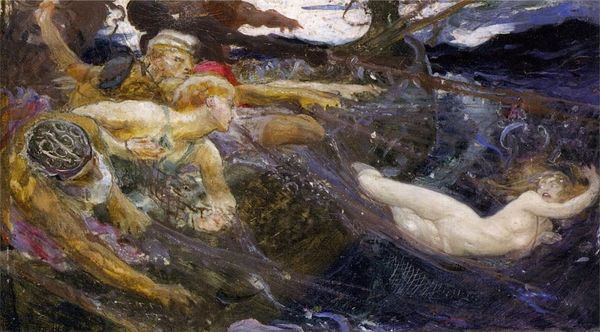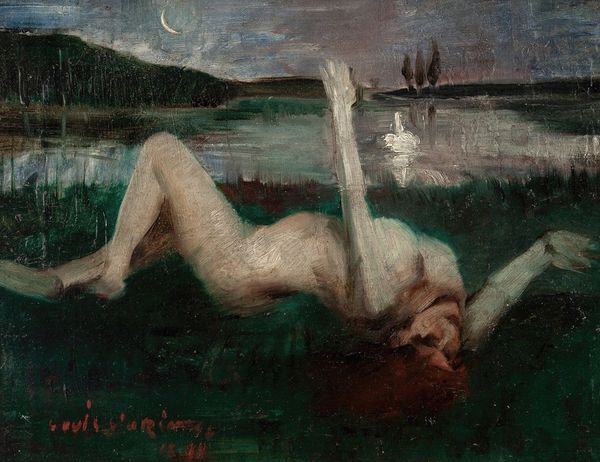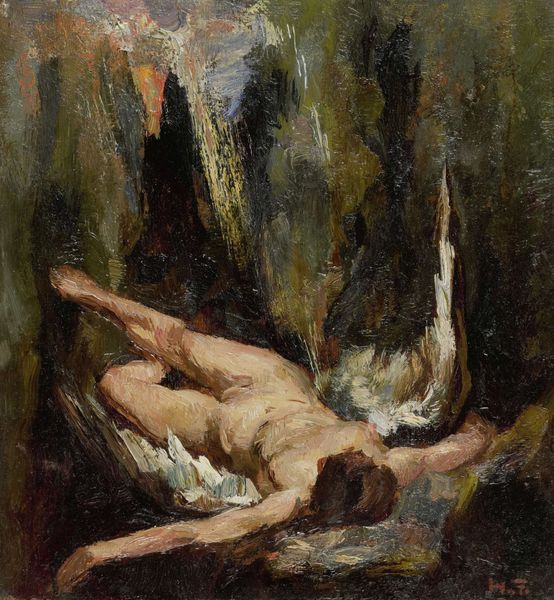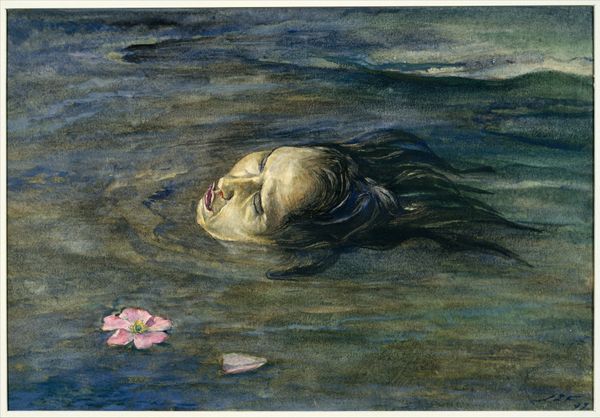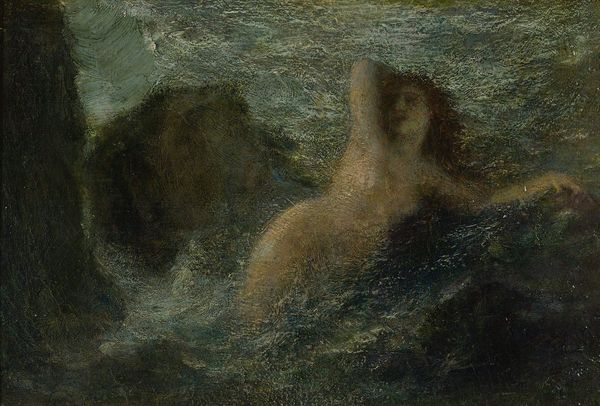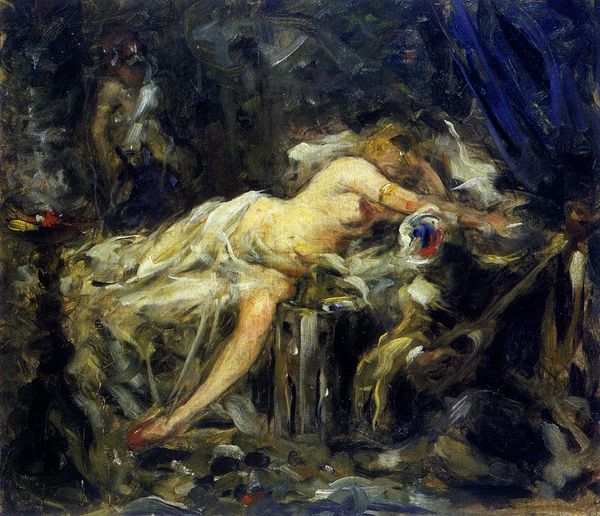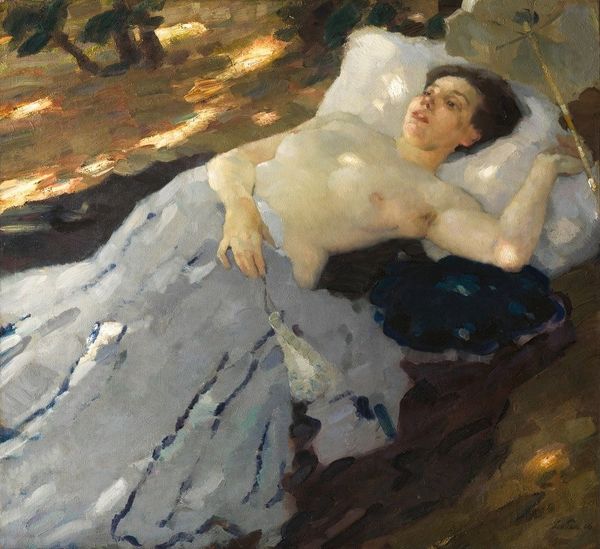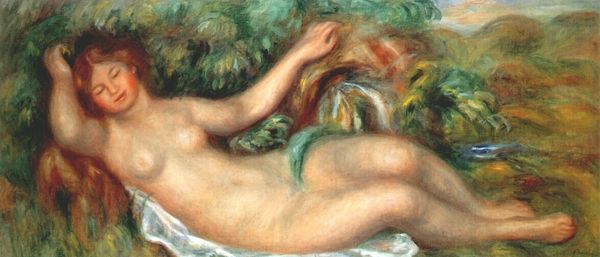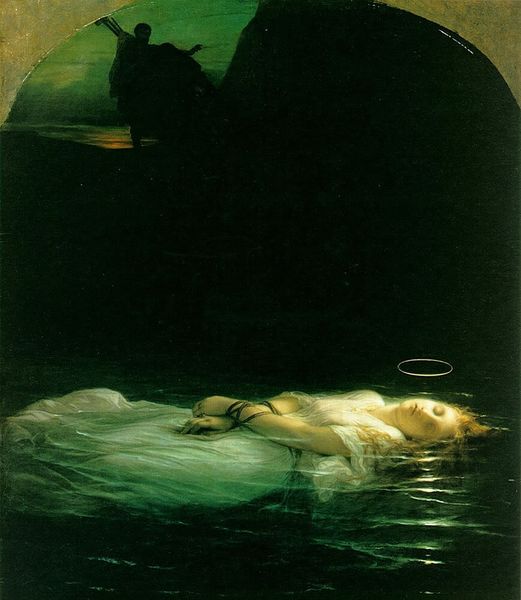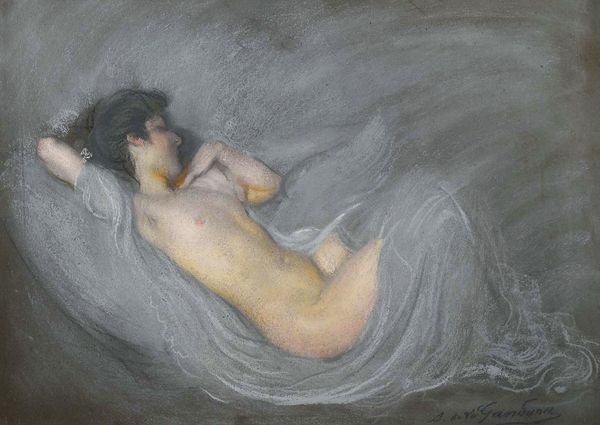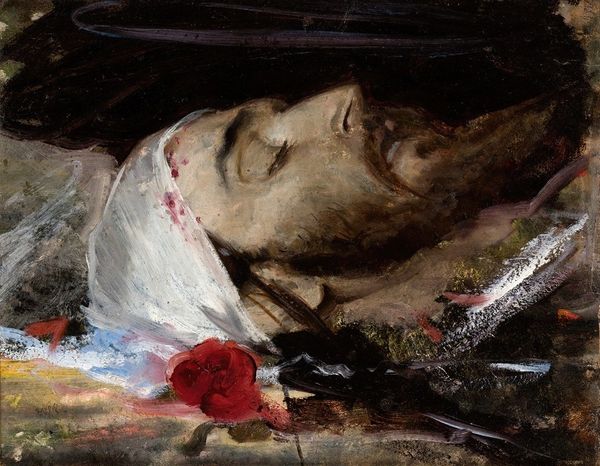
painting, oil-paint
#
painting
#
oil-paint
#
landscape
#
figuration
#
oil painting
#
romanticism
#
mythology
#
history-painting
#
pre-raphaelites
Copyright: Public Domain: Artvee
John William Waterhouse painted "Study For Nymphs Finding The Head Of Orpheus" with oil. Waterhouse, working in late 19th-century England, revisited classical mythology through the lens of Pre-Raphaelite aesthetics, during a time when ideas about beauty, gender, and the relationship between art and nature were being renegotiated. In this scene, Waterhouse depicts the nymphs discovering the severed head of Orpheus, the legendary musician and poet. According to myth, Orpheus was torn apart by a group of Maenads (frenzied women) because he rejected their advances after the death of his wife Eurydice. The nymphs represent a complex vision of femininity, embodying both beauty and destructive potential. Waterhouse’s work subtly challenges and reshapes these narratives. Through his interpretation, we are confronted with a world where beauty and brutality coexist. He prompts us to consider the ever-evolving dialogues around gender, power, and the enduring legacy of classical stories.
Comments
No comments
Be the first to comment and join the conversation on the ultimate creative platform.
